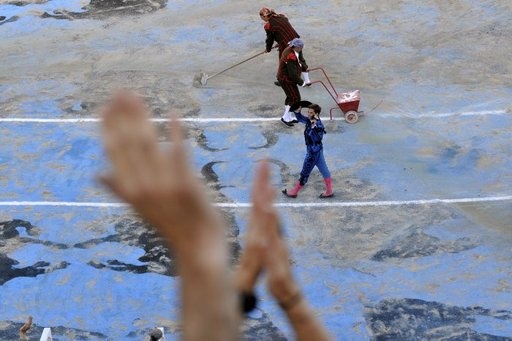Arles Arena projects
*September 2010 - ongoing
The inspiration and the site for these projects is the antique and notable Roman arena of Arles, France. It was built in about 1 BC and has now been magnificently restored. It holds about 25,000 people. This work is an extended contemplation on two fields; bullfighting and opera, brought together.
Initially, the Corrida Goyesque was a gigantic painting, covering the floor of the arena. It existed for only a few minutes, then was erased by the corrida. As soon as the sky blue mandala of 100 interlocking bull shadows was painted, it was destroyed by the bulls and matadors.
This work sought a way to connect the unstable and violent part of one art practice to contemporary painting.
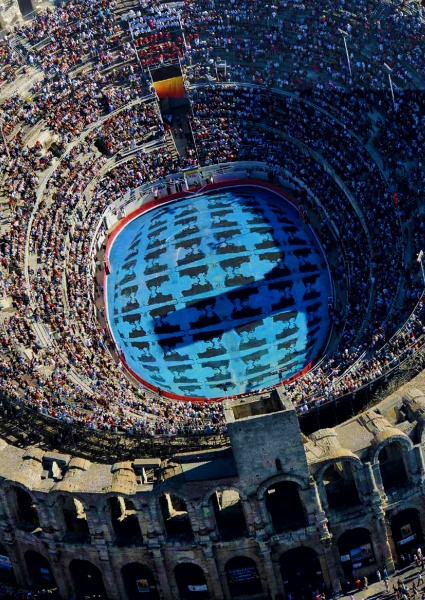
The form of the bullfight may be ephemeral; it is a polarizing art. The Viennese Actionists approached unruly, polarizing ephemera so well, but taking what might be termed a "northern" quality out of their actions, while leaving the severity in, one could find a path that leads to Spain, particularly as a painter.

Part 2 in this site will be installed in the 60 upper arches of the same arena.
This project addresses the architecture of the building itself, ornamenting it again, as the Romans did. Long ago the Roman statues that stood in these upper arches were knocked out, and now, the newly glowing stone has been restored and readied to support art, just as it did when it was first built. There will be a series of images reflecting the actions of a group of characters, echoing the missing statues, to dramatically revive a classical narrative, which also originates from this setting.
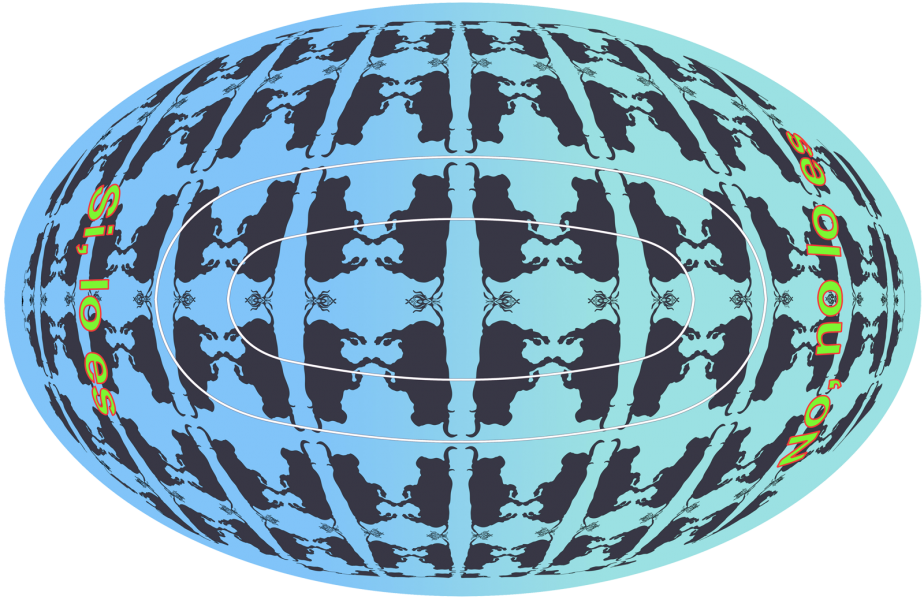


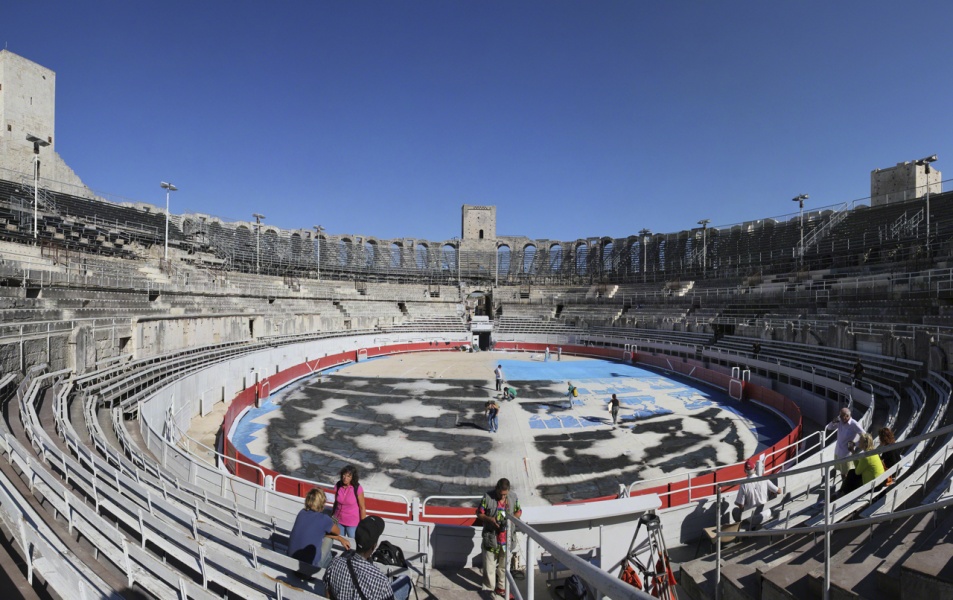

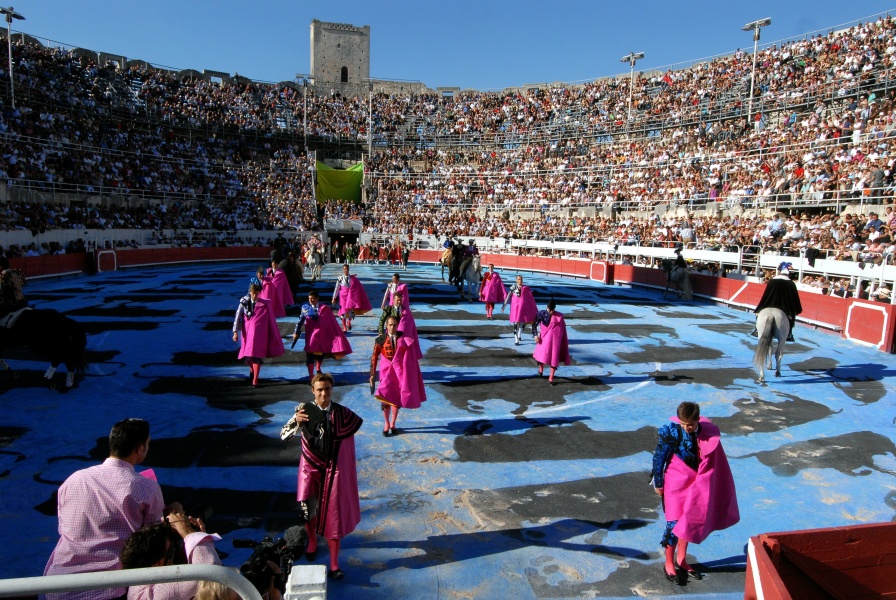

Based on Georges Bizet's opera Carmen, which concludes with Carmen's death in front of a bullfighting arena, this project for Arles takes the actress Isabelle Huppert as its inspiration, as Carmen.
The piece can be revealed through the 60 arches in contemporary cinematographic time, as 60 frames of film. It asks for comparison to Roman temple friezes, where the action unfolds in chopped up moments, perhaps repeating an action, perhaps moving forward in the jumping progression of Proust's magic lantern.
This installation is a meditation on the opera. In a way it is Carmen without music. Additionally, as part of the project, renowned Flamenco guitarist and composer Gregorio Ibor-Sanchez will write a transposed Carmen, allowing the story to reassert itself with a different musical foundation.

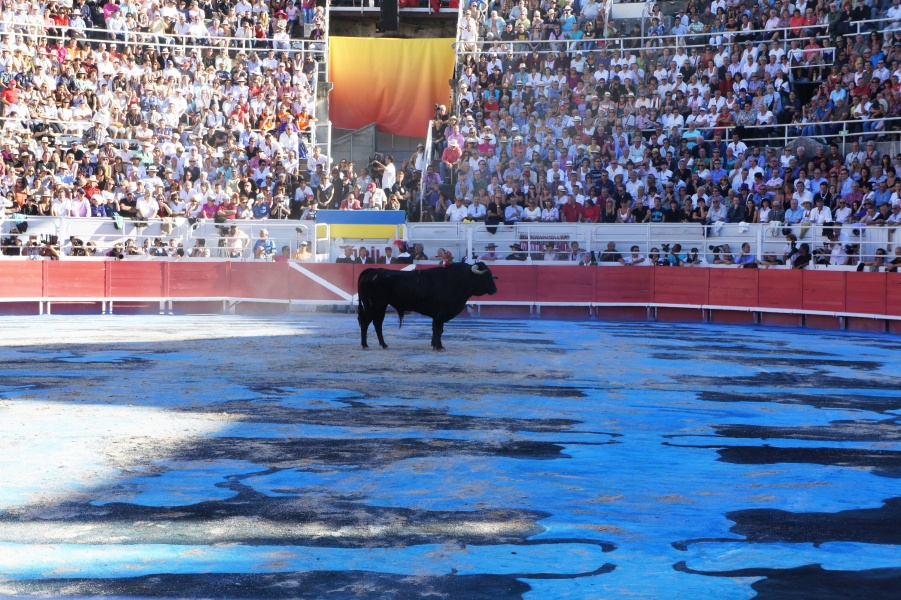
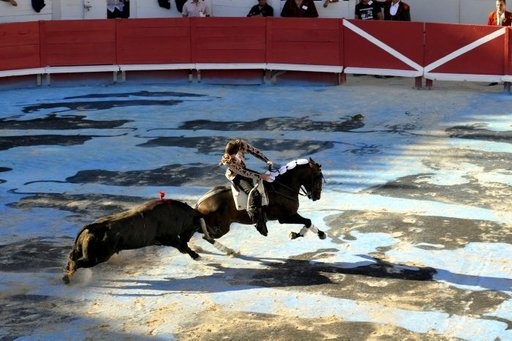
A documentary film about these projects was produced. Directed and produced by Christopher Burke, Ena's Goyesque Director of Photography Martial Barrault oversaw a team of photgraphers. The film addressed the numerous parts of a complex piece. The filmmakers present all facets of the project from their own understanding.
When the project is complete, these new paintings will leave no trace and the life of the arena as a monument of the past will be restored.
